Empowering Positive Community - Government Relationships.
The community engagement platform for local governments.
- Strengthen resident trust and transparency.
- Strengthen community-police relationships.
- Make data-driven decisions about the community.
- Satisfy CALEA accreditation requirements.
Engage Your Community
Community’s Voice
Civic Engagement
Real-Time Feedback
Share Data
Community Policing
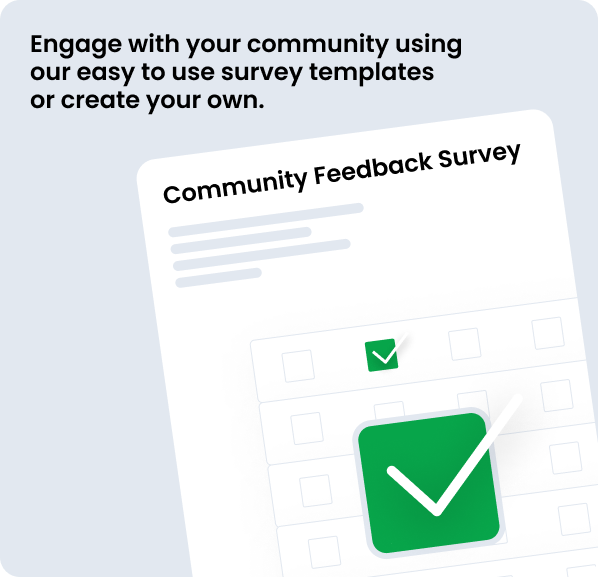
The goal of community policing should be to:
- 1. Promote safer communities by reducing crimes.
- 2. Build and foster a collaborative partnership through engagements.
- 3. Engage in comprehensive problem-solving with the community.
For police departments to achieve positive outcomes, they need to ensure that every police officer is engaged in the community by forming relationships that create lasting partnerships. For community policing to be effective, police departments need to seek ongoing feedback from the residents to better understand their community’s needs.
Police Departments should employ the concepts of Procedural Justice and Legitimacy with a focus on the four pillars:
- 1. Promote safer communities by reducing crimes.
- 2. Build and foster a collaborative partnership through engagements.
- 3. Engage in comprehensive problem-solving with the community.
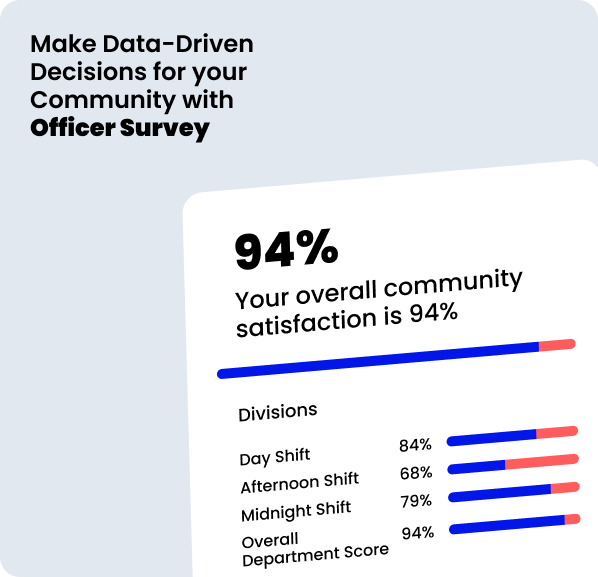
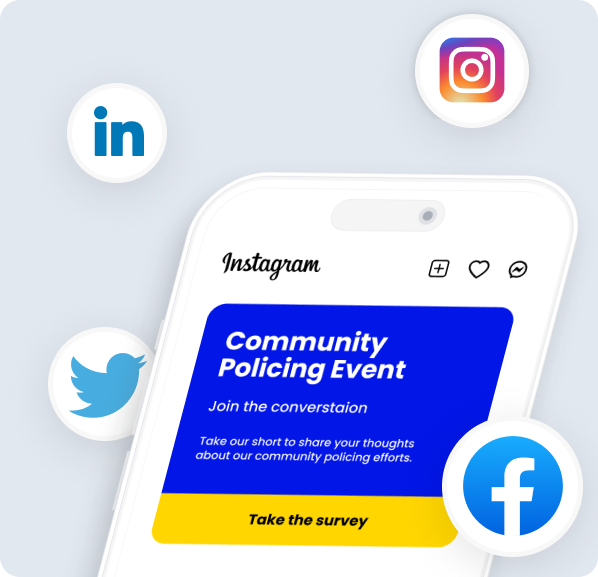
Campus Police Student Satisfaction Survey
Increase communication with students and staff. Gather instant feedback directly from the source and build trust with your students.
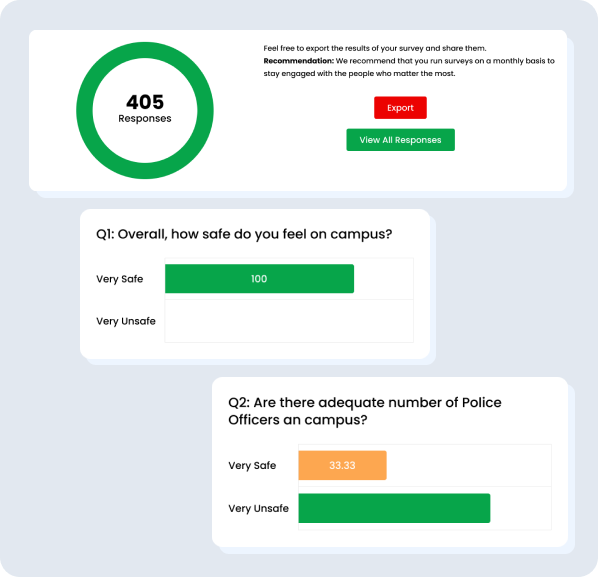
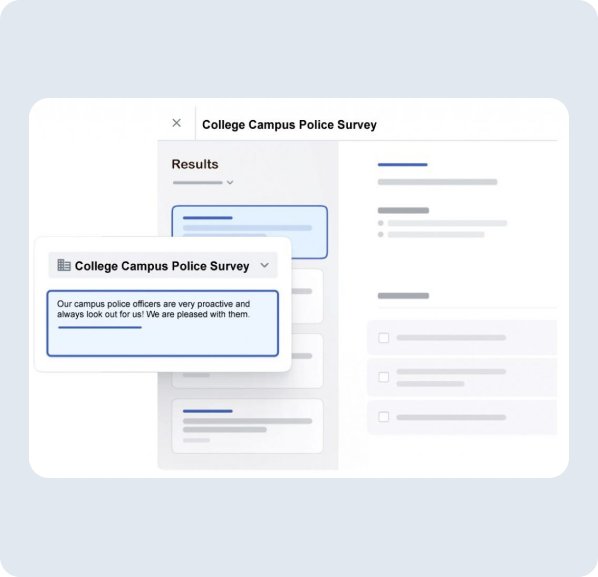
Collect insightful feedback and measure your agency’s:
- Overall performance.
- Overall competency of the officers.
- Student’s perception of the officers and the agency.
- Recommendations and improvements.
- Cut training costs by leveraging insightful data.
Citizen Police Academy Surveys
The Citizen Police Academy Surveys are a great way for the police department to get feedback from the community. The surveys help the department to identify areas where they need to improve whilst helping to build trust between the police and the community.
Community Engagement Surveys
Community Engagement Surveys collect data about their communities level of engagement within their local government. This information is further used to help improve communication and outreach strategies.
Crime Survey
Crime surveys can help to assess the impact of crime on victims and witnesses and to identify the needs of these groups. Crime surveys can play an important role in crime prevention by helping to identify the factors that contribute to crime.
Police Public Contact Surveys
The PPCS is an important tool for measuring the public’s trust and confidence in the police. The survey results can be used to help assess the effectiveness of police-community relations and to identify areas where improvements are needed.
Public Safety Surveys
Public Safety Surveys are an important tool for keeping communities safe. They help to identify areas where crime is a problem and allow residents to have a say in how their community is policed.
Resident Satisfaction Survey
The Resident Satisfaction Survey is a tool that police departments use to gauge how well they are doing in the eyes of the public. This is an important metric for departments, as it can help them to identify areas in which improvement is needed.
Small Business Surveys
Small Business Survey is a research tool used to collect data from small businesses. The purpose of a small business survey is to gather information about the business landscape, specific businesses, and the needs of small business owners.
School Safety Survey
The School Safety Survey is a thorough questionnaire that is given to students to gauge their level of safety while at school. The survey asks questions about the student’s safety, their perception of school safety, and their experience with any type of violence or bullying.
Citizen Police Academy Surveys
The Citizen Police Academy Surveys are a great way for the police department to get feedback from the community. The surveys help the department to identify areas where they need to improve whilst helping to build trust between the police and the community.
Community Engagement Surveys
Community Engagement Surveys collect data about their communities level of engagement within their local government. This information is further used to help improve communication and outreach strategies.
Crime Survey
Crime surveys can help to assess the impact of crime on victims and witnesses and to identify the needs of these groups. Crime surveys can play an important role in crime prevention by helping to identify the factors that contribute to crime.
Police Public Contact Surveys
The PPCS is an important tool for measuring the public’s trust and confidence in the police. The survey results can be used to help assess the effectiveness of police-community relations and to identify areas where improvements are needed.
Public Safety Surveys
Public Safety Surveys are an important tool for keeping communities safe. They help to identify areas where crime is a problem and allow residents to have a say in how their community is policed.
Resident Satisfaction Survey
The Resident Satisfaction Survey is a tool that police departments use to gauge how well they are doing in the eyes of the public. This is an important metric for departments, as it can help them to identify areas in which improvement is needed.
Small Business Surveys
Small Business Survey is a research tool used to collect data from small businesses. The purpose of a small business survey is to gather information about the business landscape, specific businesses, and the needs of small business owners.
School Safety Survey
The School Safety Survey is a thorough questionnaire that is given to students to gauge their level of safety while at school. The survey asks questions about the student’s safety, their perception of school safety, and their experience with any type of violence or bullying.
